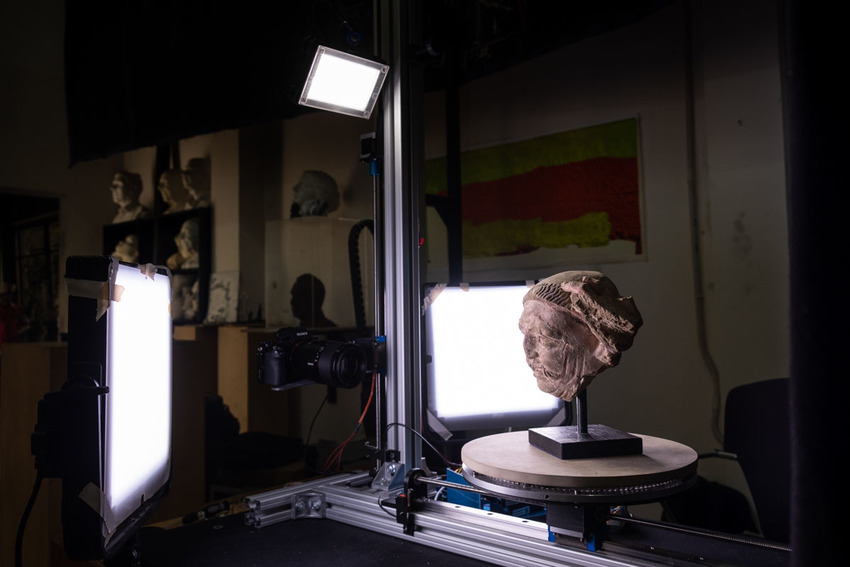
Matt Marshall working with the Small Objects Scanner at Factum. The object is placed on the rotating table in preparation for recording.
The concept for the scanner is relatively simple: an object is placed on a mechanised rotary table and as the table rotates, the object is photographed from different angles and positions with a camera that can move towards and away from it on two axes. A recording session can be programmed according to the camera lens and the overlap required betwen images; the scanner then completes the recording without any further input required from the operator. The script used to run the scanner has been designed to work with Sony A7 cameras and three focal distances (35, 55 and 90 mm).
Preliminary tests have revealed the scanner to be at least as effective as manually recording an object with photogrammetry.

Recording session with the Small Objects Scanner




